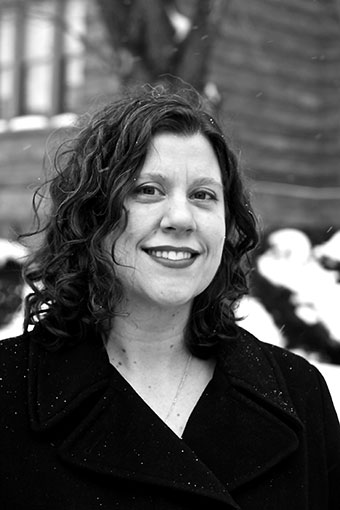The Viola Version
by Jan Jezioro

Buffalo Philharmonic violist Kate Holzmer makes her Friends of Vienna series debut on Sunday, February 10 at 3:30pm in the Unity Church (1243 Delaware Avenue), in a program that features her performing a pair of solo works on the viola and also collaborating with pianist Susan Schuman in a Hummel sonata, and violinist Amy Glidden and cellist Amelie Fradette in the irresistibly late-romantic Serenade in C major for string trio, Op. 10, by the Hungarian composer Ernst von Dohnányi.
A native of Minneapolis, Minnesota, Kate Holzmer has been a member of the BPO since the fall of 2011 as well as being one of the founding members of the Clara String Quartet, along with her fellow BPO musicians Glidden, Fradette, and Jacqueline Galluzzo. Holzemer will be performing Bach’s unaccompanied Suite No. 2 in D minor, about which she says, “I started working on Bach cello suites in seventh grade, and like all violists and cellists, I’ve been working on them ever since. These are such wonderful and challenging works, I can’t imagine ever getting bored with them, or ever feeling like I’m done with the Bach suites. I’ve worked on the second suite many times in my private practice, but until now I’ve never actually performed it, which is why I chose to program it on the Friends of Vienna series. I’m excited to have this opportunity. Violas have a similar timbre and resonance to the cello, which is why the cello suites work well on the viola. The suites sit well under the violist’s fingers, which is not true of all music transcribed from instrument to instrument”.
The other solo piece that Holzmer will perform is Vieuxtemps’s Capriccio “Hommage à Paganini” in C minor, which she describes as “a beautiful, almost mournful, piece. I think the sound of the viola is particularly suited for sad music, and I’ve had great fun finding all the different colors in this little piece”.
Holzmer says that when she was planning this recital, she was determined to program music that she had never performed before and t hat the audience would be sure to enjoy. “I’ve always known of the Hummel Sonata for viola and piano, Op. 5, No. 3, but honestly, I’d never heard it before. It’s an underperformed gem, and a lot of fun in the style of Mozart. Violists don’t have much repertoire from the classical time period, and it’s been such a pleasure to sort of discover a new piece from this era. I look forward to playing and teaching this one a lot in the future.”
Tickets are $10, $6 for students. For more information, visit www.friendsofvienna.org.
An early celebration of the Rite of Spring at UB
Many classical music lovers are familiar with the famous orchestral version of Stravinsky’s ballet score for The Rite of Spring, a work that caused an artistic riot at its 1913 Paris premiere. What is less well-known is the version of the work made for the use of the maitre de ballet, for one piano and four hands, used in planning the choreography and subsequently rehearsing the dancers. Minus the orchestral coloring, the primitive rhythmic qualities of the work are even more starkly emphasized. Claude Debussy played the four-hand arrangement with the composer before the Paris premiere, and he noted that “It haunts me like a beautiful nightmare.”
In celebration of the centenary of that epochal 1913 event, UB faculty member Eric Huebner will be joined by his graduate student Nicholas Emmanuel, in a performance of the piano duet version of The Rite of Spring in Slee Hall on the UB’s Amherst campus on Saturday, February 9 at 7:30pm. In addition to his duties as professor of piano at UB, Huebner is also the staff pianist for the New York Philharmonic, and this past fall he was featured on national television in a Live from Lincoln Center simulcast, in a performance of Respighi’s Pines of Rome.
“Stravinsky’s piano music is incredibly varied,” says Huebner. “There are hardly two pieces in anything resembling a single style of composition. My program focuses on Stravinsky’s music before 1930 including the arrangement of The Rite of Spring. The Four Études have a sound and sweep not unlike other Russian composers of the early 20th century (think Scriabin and Prokofiev), but the rhythmic character is vintage Stravinsky, while in the Sonata from 1924 Stravinsky offers a colorful send-up of classical convention and form.”
A few years before his death Stravinsky gave his approval to a two-piano, or piano duet, version of The Rite of Spring, and a few years before he became BPO music director in 1971, a very young Michael Tilson Thomas, along with pianist Ralph Grierson, gave the first performance of the score using two pianos, a performance that they subsequently recorded.
For more information, call 645-2921 or visit www.slee.buffalo.edu.
blog comments powered by Disqus|
Issue Navigation> Issue Index > v12n6 (Week of Thursday, February 7) > The Viola Version This Week's Issue • Artvoice Daily • Artvoice TV • Events Calendar • Classifieds |









 Current Issue
Current Issue